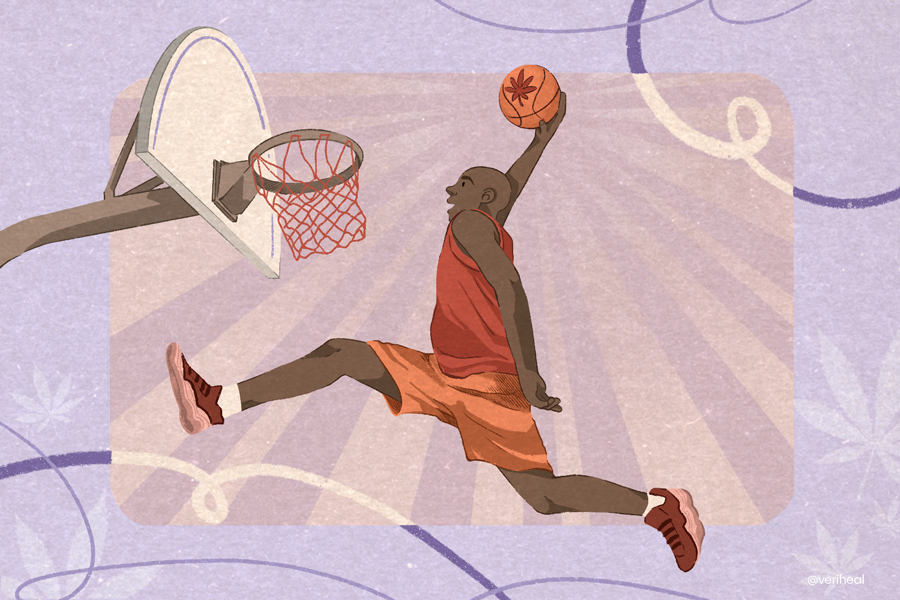In a move that sent shockwaves through the sports world, the National Basketball Association (NBA) announced that it had reached a historic agreement with the National Basketball Players Association (NBPA) to lift its long-standing ban on cannabis use by players. This landmark decision is a testament to the progressive shift in attitudes towards cannabis, both in sports and society as a whole.
Let’s recap the details of this unprecedented deal, examining its implications on the league, the athletes, and the future of cannabis in professional sports.
Details of the Agreement
The decision comes after a temporary suspension of cannabis testing for the past three seasons, which began during the 2019-2020 season when players competed in a quarantined “bubble” in Orlando in the wake of the COVID-19 pandemic.
NBA Commissioner Adam Silver had hinted in late 2020 that the temporary policy could become permanent, stating that societal views on marijuana had evolved, and the league didn’t need to act as “Big Brother” at the time. Instead of testing all players, the NBA will focus on reaching out to players showing signs of problematic dependency.
Further details of the agreement between the NBA and the Players Union reveal several key provisions in the new deal. Among the most notable changes is the removal of cannabis from the list of banned substances. This would allow players to use cannabis without facing penalties or suspensions. Throughout the negotiations, the Players Union played a pivotal role in advocating for this policy change, emphasizing the potential benefits of marijuana for athlete wellness and recovery.
As the agreement is part of a seven-year collective bargaining deal, it likely will be implemented soon, pending ratification by players and team governors.
Impact on the NBA
The decision to lift the marijuana ban in the NBA is expected to significantly impact various aspects of the league. From the perspective of athletes’ health and well-being, this policy change could open the door to exploring the potential benefits of marijuana in pain management, mental health, and recovery.
This newfound freedom to use cannabis may also influence team dynamics and league policies as teams and coaching staff adapt to the evolving landscape and incorporate cannabis education into their wellness programs. Financial implications for the league and players are another crucial aspect to consider.
The acceptance of marijuana use in the NBA could lead to new partnerships and sponsorship opportunities with cannabis-related companies, potentially generating additional revenue streams for both the league and its athletes. Overall, this progressive move aims to reshape the NBA’s approach to athlete wellness and recovery while encouraging a more open dialogue around marijuana use in professional sports.
Reaction From Stakeholders
As expected, this move has garnered a variety of reactions from stakeholders across the sports community. Athletes have expressed mixed feelings, with some embracing the new policy as a step forward for athlete wellness and recovery, while others remain cautious about potential abuse and dependency issues.
Why You Should Get Your Medical Marijuana Card
Veriheal has satisfied millions of patients nationwide by giving them access to these benefits
- Larger purchase limits
- Peace of mind
- Enhanced legal protection
- Access to higher potency strains
- Save up to 25% on cannabis purchases
- Skip the line at the dispensary
Team owners and coaches have also weighed in on the change, with some acknowledging the evolving societal views on marijuana and the potential benefits for their players. In contrast, others may still worry about the potential impact on team dynamics and performance. Public and fan opinions also vary, with many applauding the progressive move and recognizing the potential advantages of cannabis for athletes.
On the other hand, others may worry about the message it sends to young fans in areas where cannabis is still illegal. Ultimately, the NBA’s decision to lift the marijuana ban has sparked a much-needed conversation around the role of cannabis in professional sports and the importance of athlete well-being.
Future of Marijuana in Professional Sports
This dramatic change in the NBA’s policy on marijuana comes amidst ongoing discussions about cannabis testing policies for athletes, notably the suspension of U.S. runner Sha’Carri Richardson from the Olympics due to a positive THC test. The White House and President Joe Biden have also weighed in, questioning whether the marijuana ban should remain in place.
Nevertheless, despite the shifting attitudes toward marijuana in professional sports, the World Anti-Doping Agency (WADA) opted last year to uphold its ban on cannabis for international athletes.
As such, the NBA’s unprecedented move to lift the marijuana ban raises questions about the future of cannabis in professional sports. Other professional sports leagues have made strides in adjusting their policies. For example, Major League Baseball (MLB) has been notably progressive.
In addition to partnering with a CBD company to serve as its first-ever cannabis sponsor, MLB leaders also allow baseball teams to sell sponsorships to cannabis companies marketing CBD products. In 2019, MLB removed cannabis from its prohibited substances list, eliminating the previously imposed fine of $35,000 for non-compliant players.
Other athletic organizations have followed suit, with the Ultimate Fighting Championship (UFC) no longer punishing fighters for positive marijuana tests and the National Football League (NFL) changing its drug testing policy in 2020 as part of a collective bargaining agreement. NFL players now face fines rather than suspensions for positive tests, and the threshold for a positive THC test has been increased.
And while it may be a good idea for other leagues to follow the NBA’s lead and reevaluate their policies on marijuana use among athletes, they may still face legal and regulatory challenges, particularly in countries or states where cannabis remains illegal or heavily regulated.
In the years to come, researchers will continue focusing on the potential benefits of cannabis for athlete wellness and recovery.
While the debate around cannabis in professional sports continues to evolve, it is clear that the NBA’s decision marks a significant turning point in the ongoing discussion over marijuana’s role in athlete well-being and the broader sports community.
Note: The content on this page is for informational purposes only and is not intended to be professional medical advice. Do not attempt to self-diagnose or prescribe treatment based on the information provided. Always consult a physician before making any decision on the treatment of a medical condition.
Author, Share & Comments
















